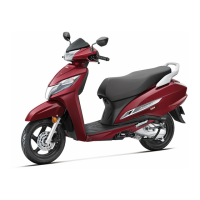
Do you have a question about the Honda ACTIVA 125 2019 and is the answer not in the manual?
| Displacement | 124 cc |
|---|---|
| Max Torque | 10.54 Nm @ 5000 rpm |
| Transmission | Automatic (CVT) |
| Rear Brake | Drum |
| Wheelbase | 1260 mm |
| Seat Height | 765 mm |
| Fuel Tank Capacity | 5.3 liters |
| Starting Method | Electric Start |
| Front Suspension | Telescopic |
| Wheel Type | Alloy |
| Tyre Size (Front) | 90/90-12 |
| Tyre Size (Rear) | 90/100-10 |
| Compression Ratio | 9.8:1 |
| Frame Type | Underbone |
| Overall Width | 710 mm |
| Engine Type | Air-cooled, 4-stroke, SI Engine |
| Front Brake | Disc (Optional) / Drum |
| Rear Suspension | Spring Loaded Hydraulic |
| Ignition | Digital CDI |
| Bore x Stroke | 52.4 mm x 57.9 mm |
Identifies country codes used in the manual.
Explains hazard signal words DANGER, WARNING, and CAUTION.
Refers to additional safety information titles like NOTICE.
Essential guidelines and precautions for safe riding and vehicle operation.
Information on labels, modifications, and loading for vehicle safety.
Emphasizes the importance of helmets and protective apparel for safety.
Lists checks to ensure rider readiness and passenger safety before riding.
Encourages practice in a safe area to familiarize with the vehicle.
Advises paying attention to surroundings and anticipating other drivers.
Tips to increase rider visibility to other traffic.
Warns against exceeding personal abilities or adverse conditions.
Strongly advises against consuming alcohol before riding.
Stresses the importance of regular maintenance for safe riding.
Guides actions to take after being involved in a crash.
Warns about the dangers of carbon monoxide from exhaust fumes.
Explains the meaning of various symbols and safety labels.
Details on helmets, gloves, boots, jackets, and trousers for rider safety.
Guidelines for the first 500 km to ensure reliability and performance.
Advice on proper brake operation and caution on low traction surfaces.
Explains the combined braking system and its operation.
Advises extra caution when braking in wet or rainy conditions.
Guidelines for safely parking the vehicle on various surfaces.
Instructions for using the side stand and centre stand for parking.
Detailed steps for parking the vehicle using the centre stand.
Guidelines for safe and proper refuelling of the vehicle.
Warns about the dangers of using improper accessories or modifications.
Warns about the risks associated with overloading or improper loading.
Explains the importance and procedure for pre-ride vehicle inspection.
Steps for starting and warming up the engine.
Procedures for safely starting to ride the vehicle.
Guidance on how to accelerate the vehicle smoothly.
Instructions on how to apply brakes effectively and safely.
Procedure for safely stopping the vehicle.
Advice on braking and throttle application when turning corners.
Steps for parking the vehicle securely.
Steps for refuelling the vehicle safely.
Explains how the speedometer shows riding speed in km/h.
Describes the odometer for total distance ridden.
Details the fuel gauge and approximate remaining fuel.
Identifies the SEL button for mode selection on the display.
Explains the indicator for scheduled vehicle service.
Describes the clock display and how to set it.
Guides on checking instrument displays for proper function.
Explains various display modes selectable via the SEL button.
Explains the meaning of the service due indicator's blinking and continuous glow.
Identifies left and right turn signal indicators.
Explains the PGM-FI malfunction indicator lamp and its meaning.
Identifies the high beam indicator light.
Explains the ECO indicator for fuel efficiency.
Identifies the side stand indicator and when it comes on.
Explains the PGM-FI malfunction indicator lamp and its meaning.
Describes the indicator for the Idling Stop system.
Details how to activate or deactivate the ECO indicator.
Controls for starting the engine and accessing fuel/seat.
Controls for headlights, turn signals, and horn.
Explains the functions of the ignition switch.
Describes the switch for controlling the Idling Stop system.
Step-by-step guide to lock the steering for theft prevention.
Step-by-step guide to unlock the steering.
Instructions for closing the ignition switch shutter for theft prevention.
Instructions for opening the ignition switch shutter.
How to engage the rear brake lock.
How to release the rear brake lock.
How to turn the Idling Stop system on and off.
Conditions required for the Idling Stop system to become ready.
Explains why the Idling Stop indicator might not come on.
Steps for restarting the engine after it has stopped via the system.
Troubleshooting for engine not starting even with throttle open.
Explains the engine cut-off feature related to the side stand.
Detailed steps to start the engine using the electric starter.
Detailed steps to start the engine using the kickstarter.
Troubleshooting steps if the engine doesn't start using the start button.
Troubleshooting steps if the engine doesn't start using the kickstarter.
Steps to prepare and begin riding the vehicle.
Instructions on how to apply the front and rear brakes together.
Steps to open the fuel fill cap for refuelling.
Steps to securely close the fuel fill cap after refuelling.
Instructions for opening and closing the vehicle seat.
Location and usage instructions for helmet holders.
Details on the front inner box capacity and usage.
Details on the center compartment capacity and usage.
Location of the tool kit, document bag, and first aid kit.
Information on the luggage hooks and their weight limit.
Explains why regular maintenance is crucial for safety and performance.
Outlines the recommended maintenance intervals and tasks.
Provides basic principles and procedures for vehicle maintenance.
Lists the tools provided with the vehicle for maintenance.
Guides on how to remove and install various body parts.
Safety guidelines to follow while performing maintenance tasks.
Details the critical pre-ride inspection items for safety.
Advises using genuine parts and warns against non-genuine ones.
Information about the maintenance-free battery and its care.
Steps to take if battery electrolyte splashes into eyes, skin, or mouth.
Step-by-step guide for cleaning battery terminals.
Explains fuse function and how to inspect/replace them.
Information on checking, adding, and selecting engine oil.
Instructions for cleaning the crankcase breather.
Guides on checking tyre pressure, damage, and wear.
Information about the air cleaner element and its maintenance.
Lists the tools included in the kit for roadside repairs.
Steps for removing and installing the vehicle battery.
Instructions for removing and installing the battery lid.
Steps for lifting up and installing the body cover.
Instructions for removing and installing clips.
Steps for removing and installing the front centre cover.
Instructions for removing the headlight case.
Steps for installing the headlight case and rearview mirrors.
Guide on how to check the spark plug condition and gap.
How to check the engine oil level and condition.
Steps for adding engine oil when the level is low.
Procedure for changing engine oil and cleaning the strainer screen.
How to check the front brake fluid level.
How to check the wear indicators on the front brake pads.
How to measure the freeplay of the rear brake lever.
Steps to adjust the freeplay of the rear brake lever.
How to check for wear on the rear brake shoes.
How to measure the freeplay of the front and rear brake levers.
Steps to adjust the freeplay of the front and rear brake levers.
How to check for wear on the front and rear brake shoes.
How to check the side stand's operation and lubrication.
How to check the throttle's smooth operation and freeplay.
Steps to clean the crankcase breather tube.
How to adjust the vertical aim of the headlight.
How to adjust the rear suspension spring preload.
Addresses issues related to the engine failing to start.
Explains warning lights and malfunctions in indicators/systems.
Checks to perform when the starter works but the engine doesn't.
Checks to perform when the starter motor doesn't operate.
What to do if the PGM-FI MIL indicator comes on while riding.
Explains fuel gauge indicator display errors and when to see a dealer.
Steps to take if the Idling Stop indicator does not activate.
What to do if the engine doesn't stop with the Idling Stop system.
Troubleshooting for engine not starting even with throttle open.
Steps to take if the vehicle battery goes dead.
Procedure for replacing burned-out light bulbs.
How to replace the headlight bulb.
Information on the position light LEDs.
How to replace the brakelight/taillight bulb.
How to replace the front turn signal bulb.
How to replace the rear turn signal bulb.
How to inspect and replace blown fuses.
Discusses fuel pump filter clogging and other causes of unstable operation.
Information about ignition keys and key number plates.
Operation and function of ignition and engine stop switches.
Information on odometer and tripmeter displays.
Location for storing owner's manual and registration.
Guidelines for washing the vehicle to ensure its longevity.
Guidelines for washing, and caring for aluminum, panels, and exhaust.
Recommendations for storing the vehicle during extended periods.
Guidelines for safely transporting the vehicle.
Recommends environmentally friendly cleaning products.
Advice on proper disposal and recycling of vehicle waste.
Location and importance of frame and engine serial numbers.
Information on using ethanol blends and potential risks.
Guidelines to protect the vehicle's catalytic converter.
Lists key dimensions, weights, and capacities of the vehicle.
Details on tyre specifications, spark plug, and engine oil.
Specifications for various bulbs used in the vehicle.
Important torque values for engine oil plug and drain bolt.
Specifications for the main and other fuses.
Outlines the general terms and conditions of the vehicle warranty.
Requirements for making a warranty claim.
Lists items and conditions not covered by the warranty.
Details the terms and conditions of the emission warranty.
Conditions for admitting emission warranty claims.
Details on component replacement under emission warranty.
Conditions under which the emission warranty is not applicable.
Defines the scope and limits of the emission warranty.
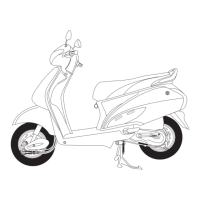
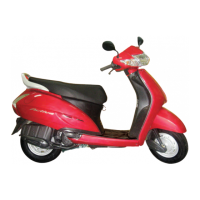


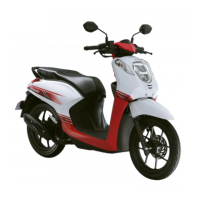
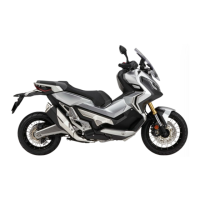
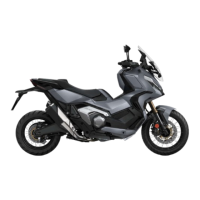
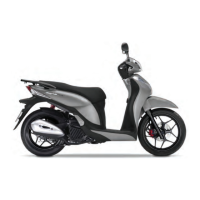
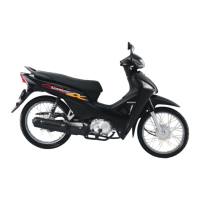
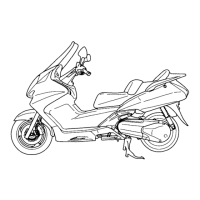
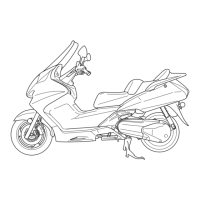
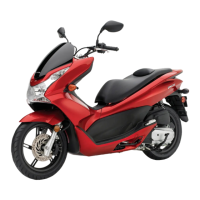
